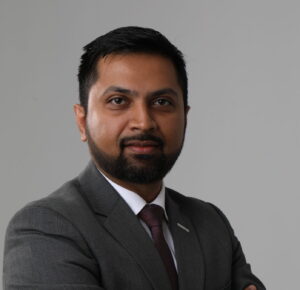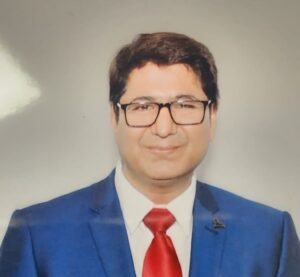The growth of the construction industry in Saudi Arabia and the UAE – combined with a drive for sustainability and efficiency, and the growing importance of Indoor Environmental Quality – is shaping the market landscape of air movement solutions in the GCC region. Indu Revikumar, Features Writer, Climate Control Middle East, has the story…
The expansion of the construction industry in the Kingdom of Saudi Arabia and the UAE, along with the need to maintain and improve the sustainability performance, efficiency and longevity of existing HVAC systems, primarily drives the growth of the air movement equipment market, says Atam Hayat, Global Head – Sales & Marketing, Central Ventilation Systems. The strategic initiatives by the UAE government, such as UAE Net Zero by 2050 and Abu Dhabi 2030 Vision, he adds, are also contributing significantly to the huge transition we have been observing in terms of the market preferences for Indoor Environmental Quality (IEQ) equipment. Moreover, Hayat says, these strategic initiatives by the UAE government and by organisations such as the American Society of Heating, Refrigerating and Air-Conditioning Engineers (ASHRAE), Chartered Institution of Building Services Engineers (CIBSE) and the Emirates Green Building Council (EmiratesGBC) to fortify the UAE Sustainability Agenda, have led developers and consultants to prioritise sustainable products and equipment with the highest efficiencies and the least environmental impacts.
Joining the conversation, Dinesh Rupani, Assistant General Manager, Equipment Division, Leminar Air Conditioning, says that some of the advancements in the air movement solutions in the GCC region include the use of high-efficiency electronically commutated (EC) fans with low SFP to reduce power consumption, integration of Building Management System (BMS) with digital and analogue signals to comply with Green Building regulations and the management of ventilation air volume, achieved through demand-controlled ventilation. These have contributed to the growth of air movement solutions, recently, he adds.
Pointing to the growing awareness about the significance of clean air and IEQ, Rupani says that it has been a major contributing factor to the growth of the market, despite major disruption during the pandemic. In the pre-pandemic world, he adds, the emphasis was on temperature and humidity control, but now there is a notable shift in the priorities, and there has been a heightened emphasis on ensuring that indoor spaces have a constant supply of clean and well-ventilated air. He adds: “Communities are progressively recognising the significance of incorporating fresh air units into their spaces, in line with the growing awareness of the necessity to introduce fresh air and expel stale air from living environments.
Moreover, when compared with old-school methods of simply recirculating the air in the living space, future-proofing of the built environment for better infection control – building humidification, ultraviolet germicidal irradiation (UVGI), air filtration and air purification systems – can limit the transmission of viruses.”
Dipen Patel, Managing Director, ZIEHL-ABEGG Middle East, shares a similar perspective as Rupani and says the pandemic has increased emphasis on improving the IEQ of public buildings, schools and office spaces. There are ongoing discussions on effectively installing IEQ systems in existing buildings, while minimising the loss of cooling or heating energy during extreme weather conditions, he says. “Our market research”, he says, “points to a customer base that values the benefits of improved IEQ, and we expect to gain even more market share as the region shifts toward self-sufficiency in the post-pandemic phase, with more companies establishing local operations.”

Atam Hayat
Weighing in, Hayat says the pandemic has increased the demand for IEQ and infection control measures, and businesses are improving their IAQ and ventilation systems to reduce airborne transmission. He adds, “There is now greater demand for air filtration, HVAC systems, disinfection technologies, and infection-resistant materials.” In this post-pandemic phase, he adds, Central Ventilation Systems has partnered with MayAir, a manufacturer of air filtration equipment, to provide customers with the most advanced filtration technology (UVGI and Bipolar ionisation) and with Novenco Building and Industry to offer IAQ solutions and air-handling brands to ensure a complete end-to-end HVAC solution to customers.
Taking the discussion to the recent advancements in air movement solutions, Hayat says the proper adoption of innovative solutions can improve the performance of buildings in the GCC region. Further, he says, the advancements in air movement solutions can transform the environmental and health performance of the GCC region while contributing to a more sustainable and healthier built environment. He also points out to some of the latest advancements, such as the new energy-efficient HVACR systems, which are designed and installed to reduce energy consumption and improve Indoor Air Quality (IAQ); smart DCV systems, as mentioned earlier by Rupani; improved ventilation systems that are designed to provide better air movement while reducing energy consumption; and high-efficiency air filters.

Dipen Patel
Weighing in, Patel says predictive maintenance is an Internet of Things (IoT) trend that emphasises efficient planning of cleaning, maintenance, filter exchanges and monitoring. ZIEHL-ABEGG, he adds, offers the necessary platforms to help customers stay ahead with such solutions. Furthermore, Patel says, the cooling capacity requires approximately eight per cent of global energy consumption, and installing more efficient HVAC systems can significantly reduce worldwide CO2 emissions. Therefore, he says, combining premium efficient products with smart control systems can save energy. “Automatic control of fresh air supply, using sensor technology, is also an effective solution, where HVAC systems operate only when required (Demand Based Control),” he says. “For instance, in a private home, the heating or cooling capacity depends on the number of people inside, or the CO2 value, for good indoor quality.”
Shifting the discussion to the market preferences regarding product features, Rupani says, “We are now seeing a shift towards smart equipment, and there is a surge in the requirements for SMART controllers – integration of sensors, variable-speed drives and BMS compatibility.” It is not solely on cost, he adds, but it depends on the client and consultant specifications on what additional features are required to achieve the desired results regarding IEQ with energy efficiency.
Patel says the focus is on modern products with low energy consumption, which are sustainable and environmentally friendly. Though cost is, and will remain, an important consideration, he says, choosing a long-term solution makes it possible to achieve the best results. The MEP market, Hayat says, seeks a balance between quality and cost-effectiveness. While some clients are willing to pay more for sustainable, innovative and higher-quality products, he says, others prioritise cost-cutting measures and propose value-engineered alternatives. “Hence, it is important to maintain a healthy balance between quality and cost-effectiveness to meet market demands successfully,” he says.
The growing awareness of the health consequences associated with inadequate IAQ is also driving the growth of the retrofit industry in the UAE. The retrofit projects, Hayat says, are essential to improve IEQ, and it is interesting to note that the market is keen on investing in retrofit projects that prioritise IEQ improvements, such as upgrading HVAC systems, installing air filtration systems and using low-emission building materials. Moreover, he adds, the increasing popularity of green building certification programmes, such as LEED, EGBC and CIBSE, also contribute to the importance of healthy indoor spaces.

Dinesh Rupani
Weighing in, Rupani touches upon the importance of ROI studies and lifecycle versus initial cost analyses in retrofit projects, as they serve as a benchmark to suggest if the unit in a building needs a total replacement to enhance operations and to meet the client’s requirements.
Retrofitting to exchange old products with low efficiency with new products with high efficiency, Patel says, is a trend in the region. He adds: “When cost is a driver, and the buildings are ageing, they still need to continue functioning. With all the modern and more efficient products now readily available, it is more economically viable to change components and not the complete equipment. This not only provides continuous savings and a better return on investment but also prolongs the existing equipment’s life, which is also more sustainable.”
Hayat says: “The manufacturers of air movement equipment in the GCC region must comply with local regulations and standards, such as those set by the Gulf Standardisation Organisation (GSO) and the Emirates Authority for Standardisation and Metrology (ESMA).” He adds that building certification programmes, such as LEED and the Estidama Pearl Rating System, play a critical role in driving demand for air movement solutions by strongly emphasising IAQ and energy efficiency. Further, elaborating on the region-specific testing regimen for air movement solutions, Hayat says that performance parameters would depend on the product or service being tested. In this case, he adds, parameters may include performance, efficiency, reliability, and fire and life safety.
Hayat, touching upon the challenges faced by air movement equipment manufacturers, says that manufacturers face challenges such as shortage of skilled labour, supply chain disruptions and price volatility of raw materials. To overcome these challenges, he adds, they need to invest in employee training and development programmes, diversify their supply chain, look for alternative materials or suppliers, and work with local governments and regulatory bodies to comply with laws and regulations.
Rupani says the lack of regular preventive maintenance is a major concern in the industry, and many service-related calls could have been avoided if users followed the recommended periodic checks of their equipment. For instance, he says, filter maintenance is crucial to prevent clogging – leading to reduced airflow, increased power consumption and damage to other components.
Copyright © 2006-2025 - CPI Industry. All rights reserved.